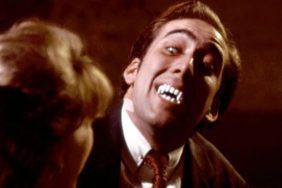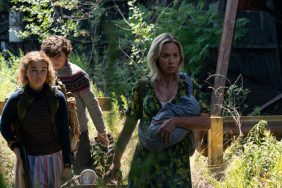The Brides of Dracula (dir. Terence Fisher, 1960)

Oh yeah, I should’ve mentioned: These films are all period pieces, and take place at the turn of the last century.
After killing Dracula in the first film, the studio found themselves stymied for a sequel. Of course, as we who were raised on slasher sequels know, the death of a monster means nothing to a resourceful studio. Two years later, we were treated to The Brides of Dracula, a slightly dumber but just as fun sequel.

The central vampire this time around is also a remote European baron named Meinster (David Peel) a young, blonde stud who is kept chained in his bedroom by his mother, the Baroness (Martita Hunt). How so many noblemen in East Germany became vampires is never explained. Maybe there was a grand ball held centuries ago wherein a vampire snagged and transformed all the local nobles, leading to generations of vampire secrets. But that’s as may be.
The Baron’s castle is visited by a traveling French hottie named Marianne (Yvonne Monlaur), a sleek, bosomy Romance Novel starlet who falls somewhere on the Edwige Fenech spectrum. She manages to have some conversations with the Baron, and she eventually frees him out of love. He immediately begins chomping at people, converting his mother into a vampire with the help of his… I think it’s his sister, although she could be a servant. Anyway, the Baron has his own personal Renfield in the form of Greta (Freda Jackson). The Baron’s bitey activities remain obscure to Marianne, even when he vamps her roommate (Andree Melly); Marianne, by the way, is a teacher.

Van Helsing eventually enters the picture to do battle. Waiting for Van Helsing to show up takes some patience. Sure, Marianne is a pretty young innocent, but I was waiting for Cushing’s heroism to take center stage. Van Helsing ends up staking the Baroness out of mercy (she doesn’t want to be a vampire), and sets the Baron on fire. Indeed, there’s a cool scene at the end wherein Van Helsing moves an entire windmill so that it forms a cross, weakening and destroying the vampire.
Van Helsing has a funny sidekick in the drunken Dr. Tobler (Miles Malleson). Tobler is a fat, funny, practical man who is constantly downing medicines and tinctures. He doesn’t believe in vampires, and isn’t religious. Dr. Van Helsing has several degrees in theology, and is the stern and practical one. I would love to have seen a TV series featuring these two characters. A late 19th– century Mulder and Scully, they. They only have a few scenes together, but I loved the chemistry.

In many modern vampire tales, the religiousness of the vampires is usually eschewed for more technical aspects. Vampires, in many cases, are just regular people with a virus that allows them to age indefinitely, but gives them a sunlight allergy, etc. The Hammer Dracula movies, being of a classier vintage, remind us that mayhem does not take down vampires, but purity and Christian righteousness. I’ve always felt that vampires are going to be scarier if they are also unholy. If they represent something that is just not right with the world. Unclean, dark, out of joint… evil. The Hammer films have this unholiness close at hand, and the vampires seem scarier for it.
I do miss the presence of Lee, though. David Peel is good looking enough, but he’s not nearly as menacing as Lee. He’s more like a boyband member than a Dracula. But the usual immediate tropes are already proving to be patters. Strangulations, the bounding, the second act reveal, the diaphanous robes, the two female vampire slaves, and several slow screams.
Christopher Lee would return for…





